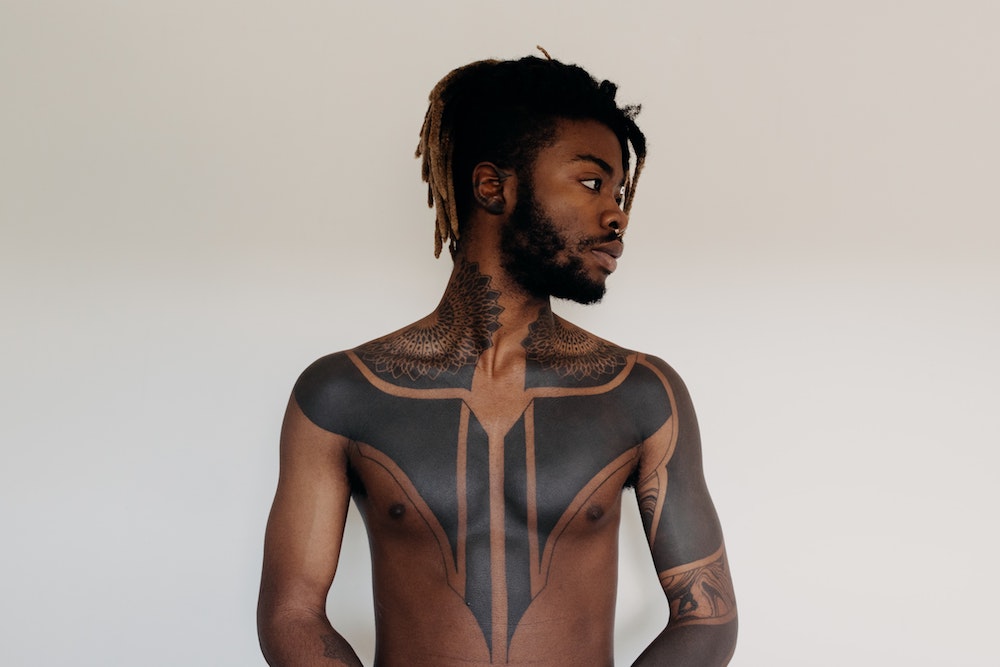
What Are The Origins of Tribal Tattoos
What are tribal tattoos?
What Are The Origins of Tribal Tattoos? You can go back to ancient tribal art with many cultures getting tattooed as a rite of passage. The tattoos are much more than just what their design looks like, it is what they represent. They are instantly recognisable and can be on all parts of the body. However usually you’d see arm, chest, lower leg, upper back or face tattoos. This would be because historically they needed to be in a visible place to differentiate between tribes.
The usual style of tribal tattoos is areas of a solid black colour with curving abstract art. Intertwined can be a range of dots and lines into the tribal tattoo designs that represent ritualistic or sacred practices. This type of tattoo art is inspired by nature and signify complex meaning through simple tattoo patterns. The typical contemporary design you see now is traditionally from Polynesian culture in countries such as Hawaii and Maori.
What are the origins of tribal tattoos?
If you’re thinking of getting a tribal tattoo it is important to understand their heritage. They have numerous symbols that signify areas such as social status, power and achievement.
Although you may think that they all look similar, there are different types of tribal art forms for different cultures. Some of the most well known tribal tattoos include-
Native American tattoos-
Many Native American tattoos incorporate animals such as wolves and birds for ritual and identity purposes. In contemporary designs they also use dreamcatchers, arrows and totem poles for protection. For Native American warriors, they’d receive tribal tattoos as a sign of their heroic qualities. They’d also turn to tattoos for healing powers. If they had a pain anywhere, they’d get a tattoo on the area to help it.
Filipino tattoos-
Filipino tattoos follow linear lines for a simplistic design and their aim is to protect you from your enemies. A key trait of Filipino tribal tattoos is that the lines differ in thickness.
Whang-od is the most popular tribal tattoo artist of this style, at a strong age of 105. Based in the Philippines, she is of the last acclaimed mambabatok, a kalinga tattooist who concentrates on lines, dots and abstract symbols.
Polynesian Tattoos –
In all Polynesian cultures, tattoos are meant to tell your life story. The Polynesian tattoos are traditionally heavy on the black ink and natural skin space. For this tribal tattooing style, placement is very important as they have significant meaning. Going back to ancient tribal tattoos, the Polynesian tribes would symbolise bravery and strength by having tattoos on their limbs and shoulders and tattoos on their forearms and hands which showed creativity.
Samoan Tattoos-
Although part of Polynesian tattoo traditions, Samoan tattoos are widely recognisable. Looking back through the history of tribal tattoos, the samoan tribal tattoos were used to show status within their tribe. Along with hierarchy, they traditionally represent strength and authority. This used to be a painful process however as they’d use tools such as a shark tooth to tattoo.
The most famous tribal tattoos are from Otzi the iceman who was covered in 61 tattoos. Although he was alive thousands of years ago, his body was found in 1991 with simple horizontal and vertical line tattoos that were created from tracing charcoal into small incisions.
Tattooing Tribal Tattoos
Tribal tattoos are found worldwide. Many modern tattoo artists now will still stick to the tattoo traditions with swirls and motifs to preserve and respect different cultures. However artists can also put twists on modern tribal tattoos by incorporating their own styles and new symbols.
It can be quite difficult to tattoo a single colour as it is important to make sure the colour is even, so although the design may seem simple, it’s not always the easiest to do.
You should research the tribal tattoos you are thinking of getting if you are not from the certain heritage or culture of the tribe. Not only to respect the culture you will be tattooing on yourself, but also so that you know what each element stands for.